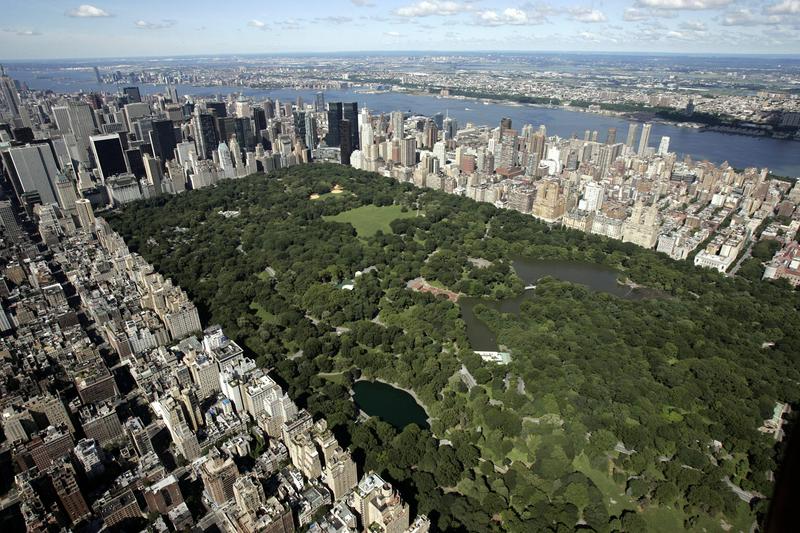Central Park, Elitism, and the Destruction of Seneca Village
By | July 12, 2019

Central Park, the 778-acre splash of green in the middle of New York City, is a world-famous urban park that offers city-dwellers a refuge into nature as far as the eye can see. While Central Park is a shining jewel in the Big Apple, the creation of the vast park was not without controversy. To make room for the sprawling green space, the city had to destroy an African-American village and relocate its residents.
Let's look at the history of the United States' first urban park.

European Criticism and Snobbery
As the city grew larger and larger, European aristocrats looked down their sophisticated noses at the crowded, dirty, industrial New York City. They expressed the belief that Americans as a whole, and specifically New Yorkers, lacked the refinement and class to appreciate a planned, landscaped, well-maintained outdoor space to beautify a city and provide a gathering place for its people. Faced with this criticism, the elite class of New York City in the 1850s sought to prove the Europeans wrong. When city officials began discussing the creation of a city park, the New York upper crust fully supported that idea. They hoped for a well-manicured green space where they could promenade and flaunt their wealth and style.

A Winning Design
While most New York city officials were in agreement about the need for a centrally located city park, few people could agree on the design for the space. Ideas and designs were batted back and forth. Finally, in 1857, they held a park design contest. Using the winning entry, city architect Calvert Vaux and New York City park superintendent Frederick Law Olmstead finalized the plans for the park, called the "Greensward Plan." The only problem left was where to put it.

Seneca Village
To make sure the park was centrally located, the park board selected a site in the middle of Manhattan. The site, more than 800 acres, stretched from 59th Street to 106th Street and from Eighth Avenue to Fifth Avenue. It was low, swampy, and full of rocks, so the land was undesirable. The trouble was the people already living there. In fact, an entire village of African-American landowners called this plot of land home. In the mid-1850s, Seneca Village has a thriving population of over 1,000 people, a school, a convent, a factory, and three churches.

Eminent Domain
New York City mayor Ambrose Kingsland used the power of eminent domain to seize the land from the African-American landowners. Under eminent domain, a government or municipality has the right to take private property from individual owners if the land is needed for public use and if the landowner is properly compensated. The word "properly" tends to be the point of contention in such cases. When New York City took Seneca Village land from its owners, they were given about $700 each, well below the true value of the land and definitely not enough to compensate for the loss of their community and history.

The Destruction of Seneca Village
Nevertheless, like a bunch of Monopoly characters, all of Seneca Village was torn down and some 1,600 people were evicted. Naturally, the residents of Seneca Village tried to protest the seizure of their land, but the plight of African-Americans in 1850s New York was not a primary concern. In the end, all of the people of Seneca Village had to leave to make room for Central Park.

Draining the Swamp
Once the houses, churches, and businesses of Seneca Village had been demolished, the next step in the building of Central Park was to drain some of the swampy areas and add fill dirt. Other swampy spots were dug out to create ponds and lakes, rocks and boulders were moved to create landscape features, and walkways were added so visitors to the park could meander through the green space. In all, the construction of Central Park cost close to $10 million and required several thousand workers to do manual labor.

A Park for the Upper Class?
In the years immediately following the completion of Central Park, New Yorkers complained that the park was intended for New York's upper class. Its location in midtown Manhattan was ideal for the elite class but not easily accessible to working-class people. Most afternoons, the park was filled with elegantly dressed women riding in opulent carriages. Even some of the events scheduled in Central Park, such as open-air concerts, were planned on weekdays when average workers could not attend. It wasn't until the 1920s when playground equipment was installed in the park, that more middle-class and working-class families began using the park more, much to the annoyance of the elite class. By the 1940s, then--parks commissioner Robert Moses worked to add more play areas to the park and to transition it from a park for the wealthy to a park for all. You know, except the people they stole it from.

